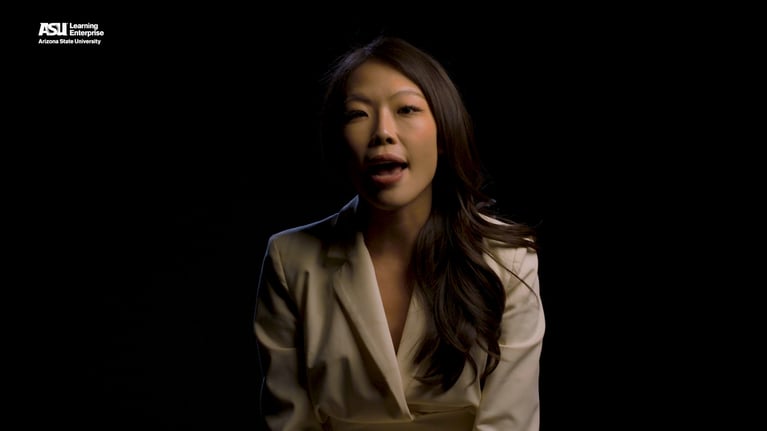ASU Learning Sparks
Understanding Crystal Structures: The Hidden Language of Atoms
The world around us is built on simple, repeating units that form complex structures, from cityscapes to atomic crystal structures. Crystallographers use a simple nomenclature to define over 400,000 known crystalline structures, based on one of the 14 unique Bravais point lattices. These lattices, combined with a unique basis or motif, create the unique structures we see. For example, the structure of iron (Fe) consists of a body-centered cubic (BCC) lattice with a single atom basis of Fe. Similarly, the CsCl structure consists of Cs and Cl ions residing on their respective simple cubic (SC) sublattices. These principles of repeating units and recurring motifs are not only crucial in understanding atomic structures but also in our constructed environment, demonstrating the power of simplicity in creating complexity and strength.The world around us is built on simple, repeating units that form complex structures, from cityscapes to atomic crystal structures. Crystallographers use a simple nomenclature to define over 400,000 known crystalline structures, based on one of the 14 unique Bravais point lattices. These lattices, combined with a unique basis or motif, create the unique structures we see. For example, the structure of iron (Fe) consists of a body-centered cubic (BCC) lattice with a single atom basis of Fe. Similarly, the CsCl structure consists of Cs and Cl ions residing on their respective simple cubic (SC) sublattices. These principles of repeating units and recurring motifs are not only crucial in understanding atomic structures but also in our constructed environment, demonstrating the power of simplicity in creating complexity and strength.
Crystallographers describe each of the over 400,000 known crystalline structures with the use of one of the 14 ways to fill space. At first inspection, one would think, “How is this possible?” Crystallographers use a specific and yet simple nomenclature to define crystal structures. The term structure refers to a composite of a point lattice and a unique basis.
The point lattice is a mathematical construct of positions or points in space. The transition vector (T) fills space to infinity along the direction of the x, y, and z unit vectors.
T = a x + b y, + c z, where a, b, and c are scalars.
Several interesting things about T is that each point has the same environment or same position relative to the next point and allows for periodic long-range order. There are 14 unique Bravais point lattices; hence only 14 ways to fill space in a long-range periodic manner.
The basis refers to a motif (i.e., ‘repeating theme’) placed on each lattice point. In some structures, like you can see here, the motif consists of a single atom; in others, it consists of a group of atoms placed on each lattice point.
The structure’s uniqueness is based on lattice point positions and the atom positions in the basis. The repeat vector rn describes the position of the nth atom in the basis.
rn = anx + bny + cnz
where 0 £an, bn, cn £ 1 as measured relative to a lattice point (typically the origin of the specific lattice). The origin is the position 0,0,0. We then measure atomic positions relative to this origin, using vector notation. For this example, let the basis consist of a AX). For the two-atom basis, the smaller atom is placed at a position vector [000] relative to the origin, and the second atom is placed at position [½½½] relative to the origin. Hence the positions of the atoms in the basis are given by the relationship atom A at [000] and atom X at [½½½]. Using short hand notation, this relationship is expressed as A 000, X ½½½.
As we said before, the lattice is built by repetitive displacements of these basic unit cells. Consider the simple tetragonal lattice that only has only one lattice point for the volume or the unit cell (note: the corner points are with seven other unit cells). Now place the motif on every lattice point. The formal description of the structure is a primitive tetragonal plus a two-atom basis 000, ½½½. Note that the atoms in this diagram maintain the same symmetry; hence, they each describe the same structure.
Let us now examine the crystal structures of some widely used materials. Fe has a body-centered (BCC) structure consisting of a BCC lattice and a one-atom basis of Fe on each lattice site. We describe its structure as: BCC lattice + Fe 000.
In the CsCl structure, Cs and Cl ions reside on their respective simple cubic (SC) sublattices. Furthermore, the nearest neighbors of Cs ions are Cl ions. This occurs to avoid the electrostatic repulsion between the positively or negatively charged ions. Based on the symmetry of the basis, the CsCl structure is described as: SC lattice + Cs+ 000, Cl- ½ ½ ½ or SC lattice + Cl- 000, Cs+ ½ ½ ½.


